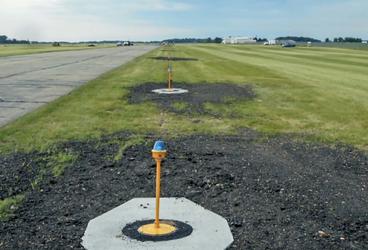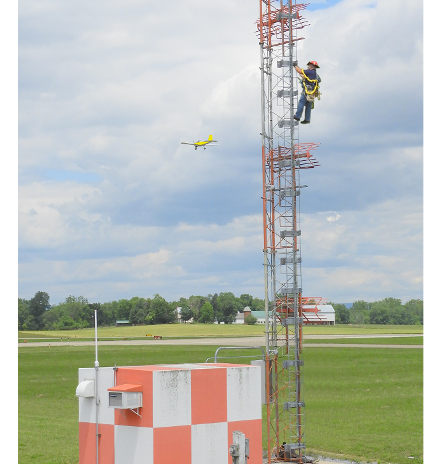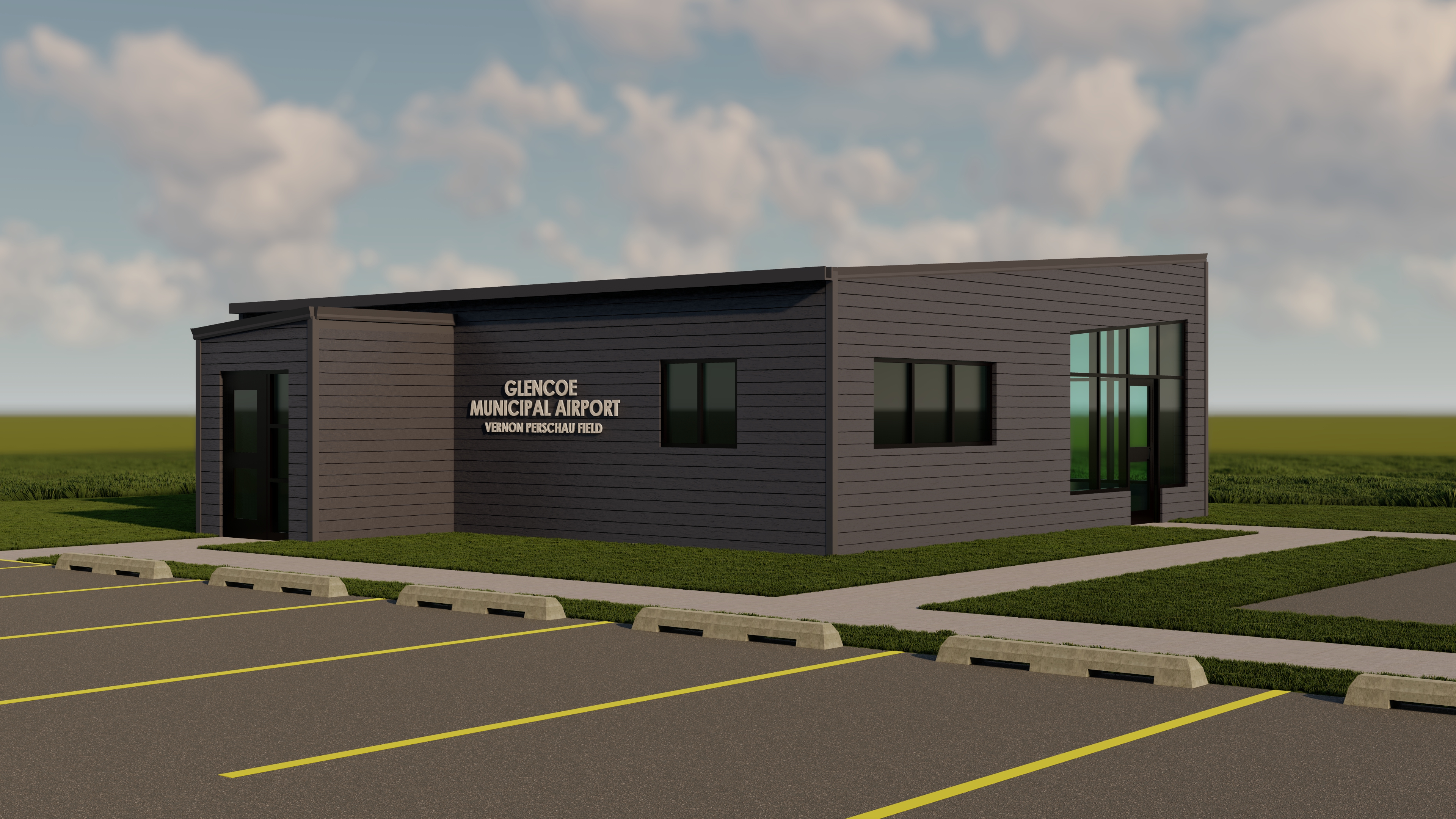By Casey Carlson, MnDOT Aeronautics
Minnesota’s public airports are getting close to having upgraded LED lighting systems. The past several years have seen numerous enhancements to LED light fixtures and their uses on our airports. The brilliant glow of brand-new LED edge lights can now be seen at many airports throughout the state.
A common misconception is that the hold-up for full integration of LED lighting has been the light bulb itself. In reality, other requirements of LED technology have caused delays.

One challenge is that Minnesota’s [usually] cold, snow-filled winters create some extremely difficult conditions for these LED fixtures to operate outside. When snow gets blown into tiny cracks, it can disturb sensitive electronics. Also, the frigid temperatures tend to shorten the usable life of the components. For example, if a runway edge light is upgraded, in order for that fixture to function as an LED, a provision must be built into the fixture assembly to keep the glass defrosted under harsh conditions. While the traditional incandescent and halogen lights lack the efficiency of LEDs, their “wasted energy” is expelled as heat, which keeps the globes and lenses nice and clear. LED lighting typically runs much cooler than traditional lighting, because traditional “old tech” lighting is less efficient.
If we save energy by switching to LEDs but lose efficiency by adding a heating element, is there enough savings to warrant the upgrade? The short answer is: Yes, there is! An LED fixture head with the cold weather kit (arctic kit) uses anywhere from 24 to 29 watts. A standard halogen uses up to 45 watts. Beyond the energy savings, some manufacturers boast a 50,000-hour rated life on their LED lights, compared to a conventional halogen light that lasts 1,000 hours on average.
We have seen some airports with low-intensity runway lights on a 120-volt system (not constant current) screwing household LED bulbs into their sockets. Will they turn on? Yes, but there’s no guarantee that the bulbs will generate enough heat to thaw off the frosty globe covering the bulb. This practice is not recommended.
Important note about LED lighting at airports: LED bulbs should not be mixed in among older technologies. The difference in color temperature, intensity, and light pattern can result in inconsistencies from light to light—which in turn could throw off a pilot’s perception of the navaids and cause unnecessary hazards.
LED precision approach path indicator (PAPI) lights are available in the marketplace as well. Are you tired of changing the bulbs on your traditional PAPIs? Put that problem behind you, as there are no bulbs to change on the new LED models. A single LED PAPI housing uses approximately 85 watts, while some old fixtures used as much as 500 watts depending on the lamp configuration. Like the runway edge lights, halogen bulbs in a PAPI have a 1,000-hour rated lamp life compared to a 50,000-hour rated life for the LED version. A couple of other features of note with the LED PAPIs: there are no red filter lenses to break, and many of the newer PAPIs have internal aiming capabilities to help with proper glideslope aiming—so you won’t have to guard your aiming/leveling tool like a hawk anymore. Make sure the LED PAPI has the cold weather kit installed for cold climates.
LED runway end identifier lights (REILs) are available, too. Traditional REILs can be a challenge to maintain because of the complex flash process. Also, the controls cabinet (commonly called the “tub”) is full of components such as capacitors, transformers, relays, and a rectifier. Many of those components are no longer needed in today’s modern LED REIL. And micro-LEDs on the main circuit board can greatly help with diagnostics and troubleshooting. The new technologies provide a consistent bright flash with lower energy costs and lower maintenance costs.
LED rotating beacons are here, but they haven’t been around for long. A quick internet search indicates that the first one was installed on March 10, 2021, in Boca Raton. Reduced maintenance costs are a big benefit of these systems, when you consider that maintenance staff must climb up the beacon tower to maintain the fixture. Another great feature is a more directed light beam on the LED beacon fixtures, which leads to less light pollution over our cities.
Medium approach lighting system with runway alignment indicator lights (MALSR) and medium approach lighting system flashing (MALSF) systems have not yet crossed the hurdle of LED migration. A MALSR or MALSF system is made up of a series of flash heads and several “light bars” containing five steady burner lamps on each bar. We know from the REIL information that LED flashing is not a problem. Instead, the issue lies with the steady burner lamps. The lamps screw into an exposed screw shell and the lamps sit in the open directly exposed to all the elements. There is no globe or lens to protect an LED bulb, so the LED bulb must be constructed so that it can thaw the frost and fog that may accumulate on the front of the lens. There are rumors that an LED bulb will soon enter testing for eventual certification for steady-burner sockets on MALSR and MALSF. Hopefully we will start seeing product integration to our systems within the next five years. Until then, keep screwing in those halogen and incandescent bulbs.
—Casey Carlson is MnDOT Aeronautics’ airport lighting coordinator.


